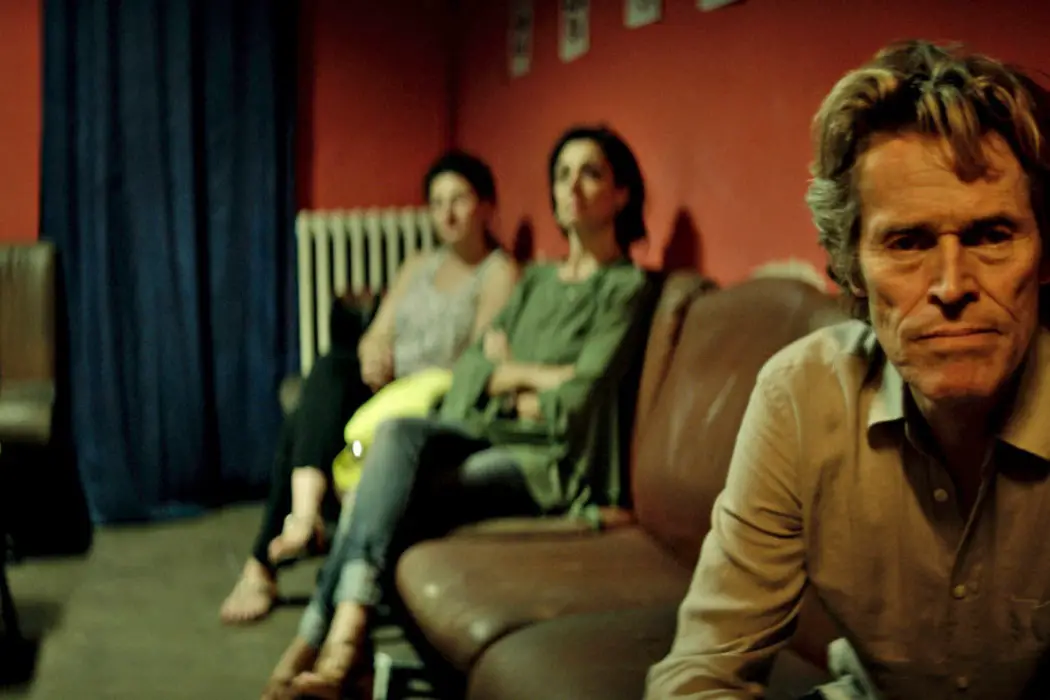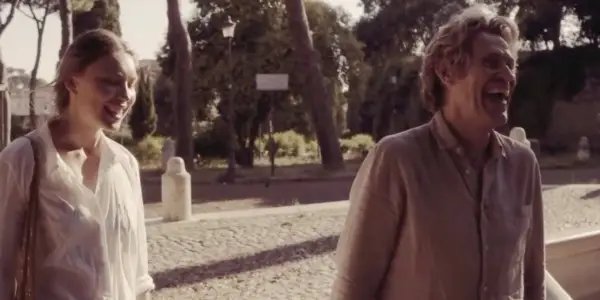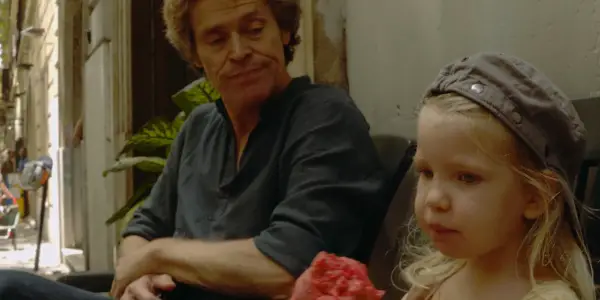TOMMASO: Just Going Through The Movements

Stephanie Archer is 39 year old film fanatic living in…
There are movies you go into wanting to like, many times drawn in by a loyalty to a performer or a filmmaker. Coupled with an intriguing synopsis, the story presented only further elevating the anticipation. For me, the idea of Willem Dafoe in a life after redemption story, all while set within a foreign country, seemed like the perfect match up. Unfortunately, Tommaso did not live up to the expectation.
Honestly, as a viewer, I didn’t feel challenged, rather overwhelmed. There is so much thrown at viewers, while all the same almost nothing. Though what keeps you going as a viewer is the belief that there must be something bigger, something larger than the film itself – I must be missing something. Based loosely on the filmmaker himself, you find yourself striving to find meaning and purpose. Though, as viewers will come to release, not all art translates.
Going through the movement
Watching Tommaso is a bit of a taxing venture, one that asks a lot of patience from its audience. The life after recovery is not as exciting and promising as one would think. Viewers are initially introduced to Tommaso (Dafoe) as he continues through his semi-daily ritual: Italian lessons, cafe, food shopping, and AA meetings. There is little intrigue presented, nothing that makes him stand out from the crowd – other than the immediate understanding he is a foreigner in a foreign country.

Much of the film feels as though it is going through the movements of a surrealist film, though lacking the dedication. It wants to be surrealist, giving a message in the symbolism of the film, though teasing audiences with a cohesive narrative that never truly arrives. While you watch a character struggle with life after recovery, you find yourself questioning what is real – what is the story.
Pure Movement
There is a lot of the camera following Dafoe walking. In general, there is a lot of walking in Tommaso. And while it becomes redundant over time, the meaning behind going through the motions and “pure movement” is never lost. But the “pure movements” are not only reserved for the incessant travels of Tommaso.
There is an interesting symbolism crafted through the use of Tommaso’s movement class. He speaks of the movements, the freedom yet the control of execution. “Do the action in a pure way”. As a recovering alcoholic, he is going through the movements, each day a continued repetition, with intention. Each day with the hopefulness every movement will be pure – knowing that the challenges of recovery will never truly fade.

And there are breakdowns of these pure movements, many intentional, others in a moment of failed control. Yelling at Nikki over the phone, running outside to yell at the drunk, and the possibility (or actuality) of cheating lingering in every corner. Paranoia and suspicion threaten to poison the purity in the actions of each day, a potentially captivating visual symphony that never truly reaches its crescendo, our own suspicion drowning the attempt.
Performance and song
Willem Dafoe delivers a solid performance, but it does not elevate beyond the outstanding work from before. It is a very reserved performance for the most part, though not without the quintessential outbursts we have all come to know and love. You can feel the struggle to remain controlled, to quell the brewing storm within, but surrounded by the film’s confusion, he is never truly allowed to shine as in the past.
The score from Joe Delia at times is highly meditative, lending an authenticity to the breathing exercises Tommaso performs throughout the day and the seemingly reflective nature of the film. There is a serene feeling that is often created, yet aggressively broken by the voice-over of Tommaso’s internal thoughts. Gongs and operatics continue to drive this authenticity, not only in behavior but for setting as well, much of this filling the background.

Sicada’s become a deafening and overwhelming sound when the drunk is outside screaming, scaring Tommaso’s baby. But not only is their sound overwhelming, but they are also representative of the internal thoughts forming and growing within Tomasso. He can not quiet his internal subconscious, the perception of his wife pulling away, losing communication, and being reckless furthering his need for control and driving his neuroticism. The world around him begins to reshape and refit his reality.
Crafting Reality
Crafting reality is one of the biggest examinations within Tommaso. And to be honest, you almost never know if what you are watching is the true reality. Where there are moments you can attribute to the imagination, the film itself comes into question as it is shaped solely by the mind of Tommaso. While it is the camera that is following him, the camera is limited to capture only his perspective.
There is a neurotic and dualistic way of thinking captured by the lens. We all craft our view of the world and reality, and as Tommaso says, it’s “what gets us all in trouble”. Everyone is living in a different reality, each of us thinking our perspective is the correct one, the only one.
Conclusion
I wanted to like Tommaso, attempting as hard as I could to find some inner meaning that could resonate within myself, that could tether a fondness to the film. Yet, at its conclusion, I felt lost in a sea of imagination, struggle, and uncertainty. While Tommaso may feel the same in his life, this should not have been how I felt walking away from this film.
There is a lot packed within its quiet subtly but culminated it fails in its translation. When thinking of the massive symbolism, and personal nature of Tommaso, this is not a film that will resonate with a vast audience, rather those who may find its meanings vastly meaningful and similar in their lives.
Watch Tommaso
Does content like this matter to you?
Become a Member and support film journalism. Unlock access to all of Film Inquiry`s great articles. Join a community of like-minded readers who are passionate about cinema - get access to our private members Network, give back to independent filmmakers, and more.













